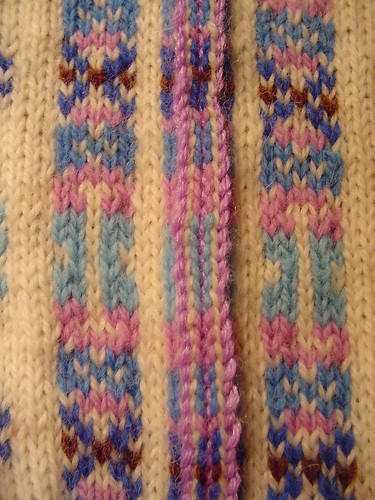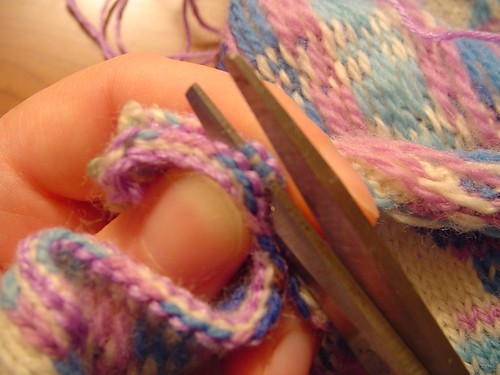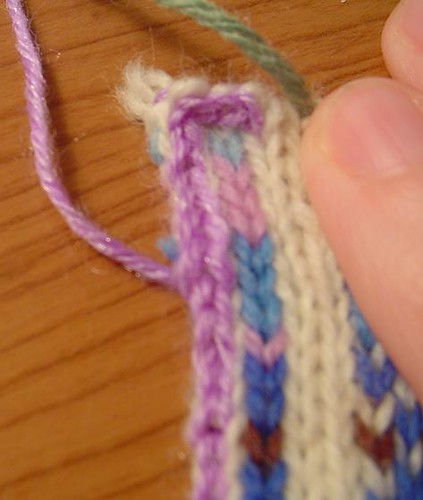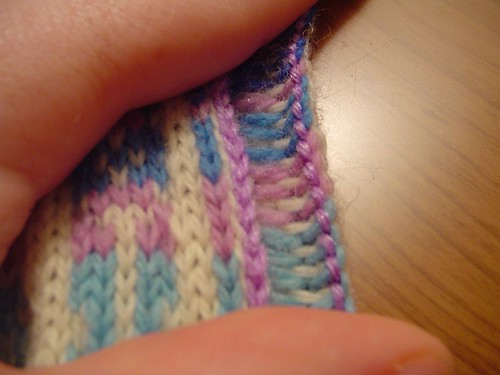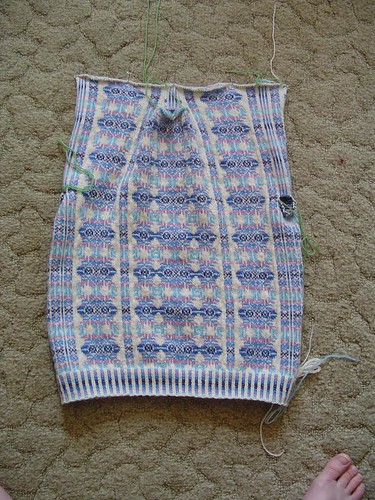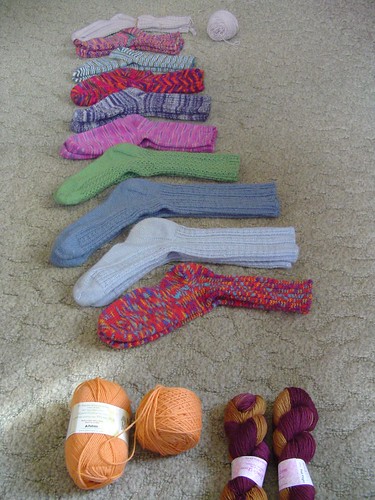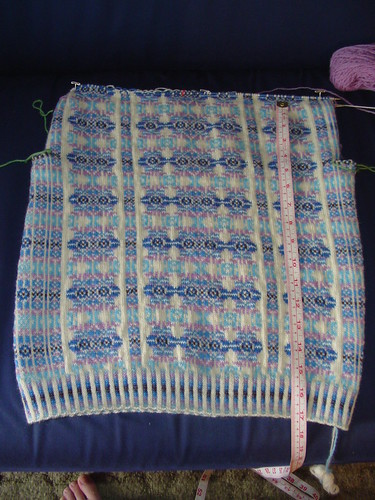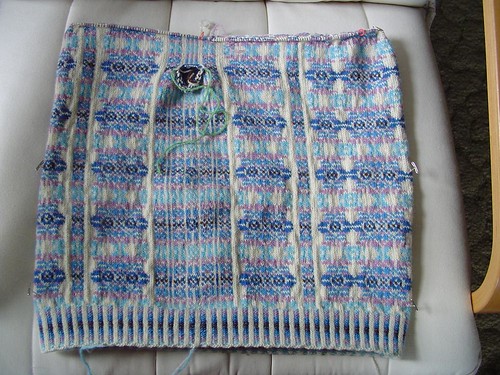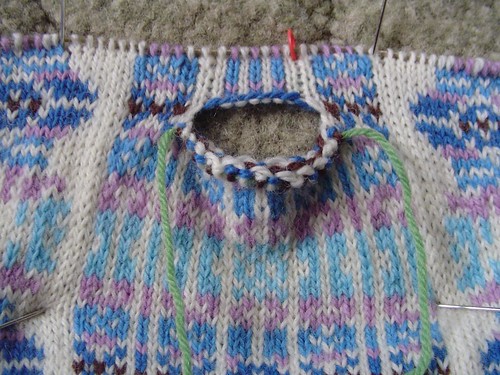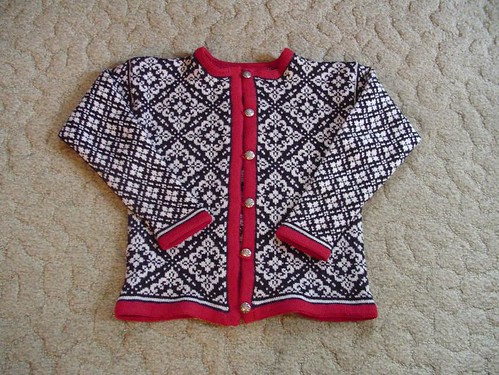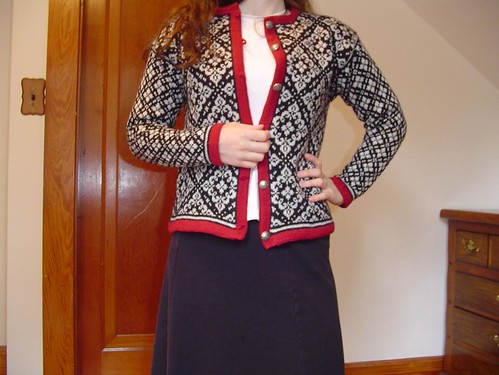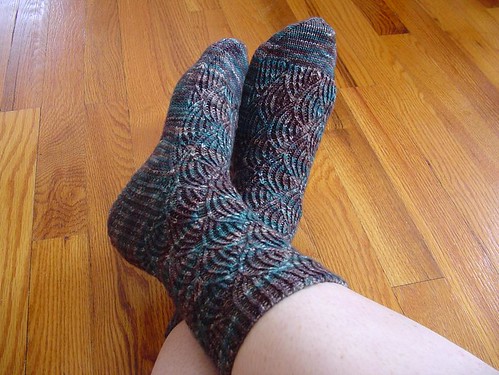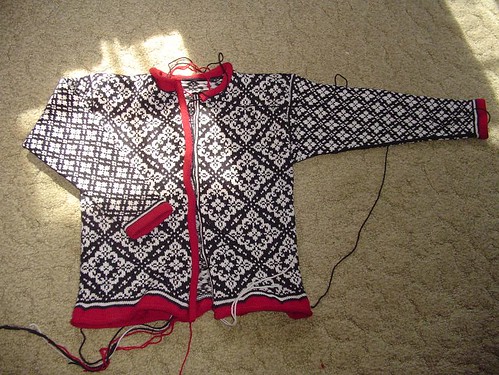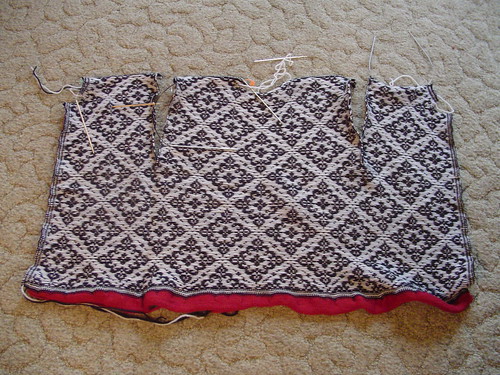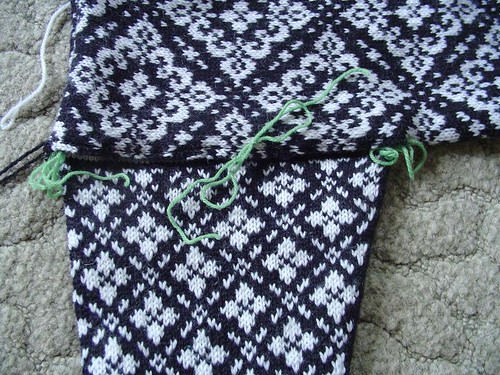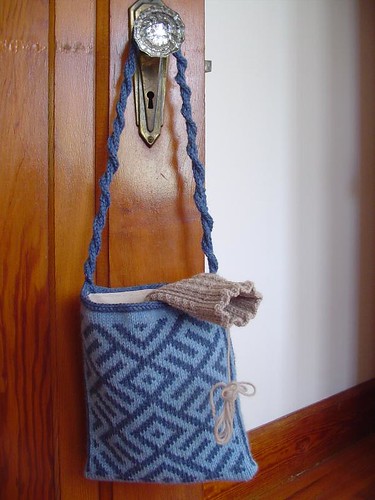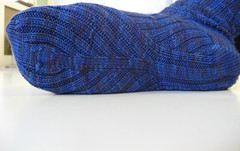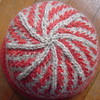Before I get on with the meat of the post, I'm going to take
Anne's advice, and post a yarn SOS. If any of you have Knitpicks Palette in Cream, dyelot 8107, would you be willing to trade a skein of it for something else? (I should have a full skein leftover of 2 or 3 of the other colors I'm using in the Vertical Stripes sweater, and have plenty of other stuff I could trade, too.) This is the color I may run out of for the sweater. I'm only really interested in a trade if someone happens to have this specific dye lot, since it would be pretty easy and cheap to order another skein (most likely in a different dye lot) from Knitpicks, if I needed to. So if you've got one, and are interested in a trade, drop me a line.
My fourth and final (for a while, anyway) pair of Retro Rib socks is done. Long live the Retro Ribs!
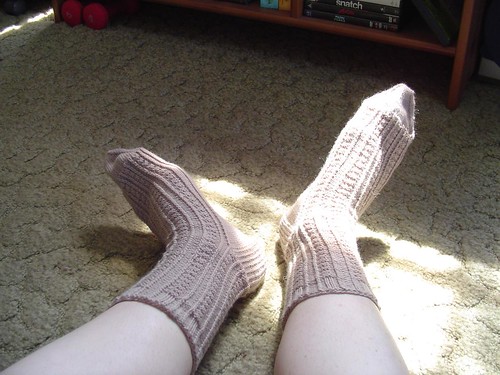
(Can you tell I didn't make them for my own little feet?)Retro Rib socks, by Evelyn Clark
Interweave Knits Winter '04
Patons Kroy sock yarn (2 skeins)
2.25 mm DPNs
I
love this pattern. It's easy to memorize, much more interesting to knit than plain stockinette or ribbing, but not complicated enough to distract one from a good movie or podcast. It divides easily onto 4 DPNs, and the nature of the pattern repeat makes it extremely easy to find your place. It also means that it's a breeze to make sure sock 2 matches sock 1
exactly. And then there's the ribbing, which means the fit is very flexible. The perfect sock pattern? It just might be. However, after 4 pairs, I'm a bit tired of it, so there may be a Retro Rib hiatus for a while. On the other hand, it's still more interesting than plain stockinette or ribbing, so maybe it will make another appearance sooner than I anticipate.
I started the Hedera socks today. I decided to use size 2 DPNs for the ribbed cuffs. My default number of stitches for socks on size 1 needles is 64, not the 60 in the pattern. The pattern is written for 2.5mm needles, which are larger than my 2.25 size 1 needles. I figured it would be worth it to use the 2.75 mm size 2s for the cuff, so I have the flexibility of making the socks really long, if I wish. I was left with tons of leftover yarn with my first 2 pairs of Lorna's Laces socks, so I know I could make these really long, if I wished. Oh, and another thing that pushed me to use the larger needles for the ribbing is that it's really humid here, which I think tightens up my gauge a bit. Stuff just doesn't glide as easily, which is a good recipe for throwing off gauge.
Someone asked what colorway I'm using for the socks. The name of the colorway is "Fall Flight", but I'm not sure if it's made anymore. This sock yarn was generously sent to me by
Wendy, when she did her sock destashing several weeks ago. I googled the colorway, to see what it looks like knit up, but had little success finding examples. I'd wager that it was in Wendy's stash for a while. Another clue to the age of the colorway is the fact that it's one of the bi-color colorways. The newer LL sock yarn I've used has had about 4 main colors per skein. This one only has 2, meaning the striping tends to be every other row. I'm not sure if LL changed the way they put together colorways at some point, but I get the feeling that their yarn like this is the older stuff. Long story short, I have a feeling it may be difficult to find this colorway in stores, if you were thinking of tracking it down.
Wow, that was a lot to write about socks that are only a couple of inches long. For the record, I'm still not sold on them yet. I've only done 2 or 3 pattern repeats, and it's hard to tell whether I like the way the striping is working with the lace pattern. I think it's starting to grow on me, but it's hard to tell. I think I'll probably continue with this yarn, because it's the type of striping that is bound to look busy, no matter what stitch pattern you use it with. I think I prefer a busy lace pattern to wild thin stripes in plain stockinette. Regardless, it's really awesome to work with LL again. I love the stuff.
